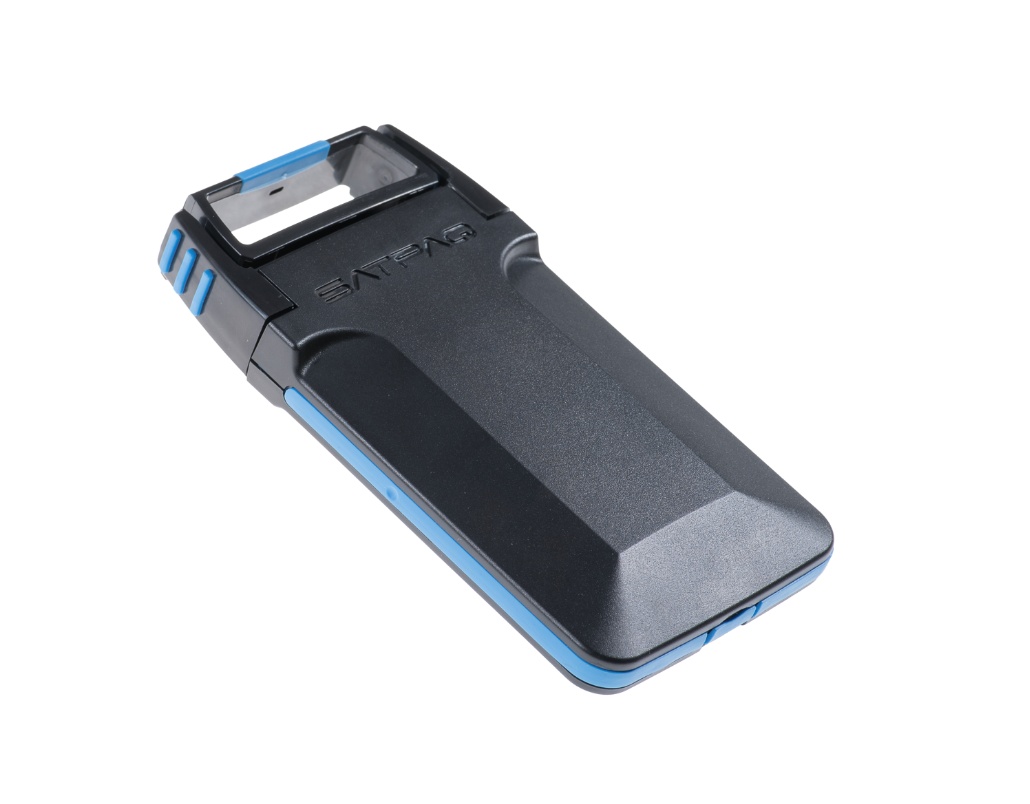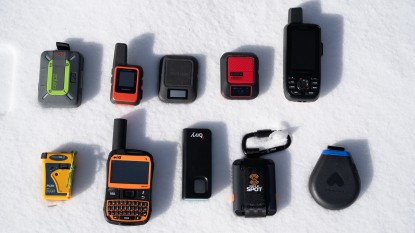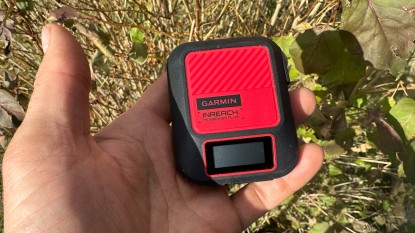Higher Ground SatPaq Review
Our Verdict
Our Analysis and Test Results
The U.S Federal Communications Commission (FCC) is discontinued the use of the frequency band SatPaq utilizes as of September 2023.
After May 10, 2022, SatPaq's SOS direct connection feature will be discontinued. Any SatPaq messages sent to the previous SOS provider after that day will get a bounce-back notification, and emergency or rescue personnel will NOT be contacted. Users will instead be provided with their current geo-coordinates, which they should use to contact a loved one who can reach out to the emergency authorities.The SatPaq, from a company called Higher Ground, is an inexpensive, truly innovative solution to United States wilderness communications. With this device and prepaid message credits, one can communicate to and from anywhere within the United States (provided your location has an unobstructed view of the sky). Higher Ground employs existing, inexpensive-to-use satellite infrastructure to keep costs relatively low. Some technical and business realities mean that signal coverage is limited to the United States and that acquiring a reliable signal requires a little more care than with other products available. On the other hand, the cost is impressively low. Directly comparing prices for beacons is a tricky proposition, given subscription plans and various terms of service, but we can confidently say that the SatPaq is the least expensive option for typical backcountry travelers in the U.S.
Performance Comparison
SOS/Emergency Messaging
Assessing SOS messaging with the SatPaq, as with any such product, is a two-part process. Further, directly assessing SOS messaging requires activating a system that one should really only activate in a true emergency. Thankfully, in our test team's decades of combined experience, none of us have ever fully activated SOS mode on any satellite communication device. We have a well-honed test procedure for assessing SOS without activating the system in earnest. Nonetheless, all we report on is, at best, simulated testing.
The two major “parts” of an emergency or SOS message are the device/app interface and the dispatch system used to get you help. The SatPaq uses the same dispatch service (GEOS inc) that pretty much all private-sector emergency communication devices use. Whether your message is sent via the SatPaq, an InReach, a SPOT device, or any of the other growing number of options, it will be received by a team at GEOS headquarters. This makes comparison easy. The SatPaq uses dispatch and SAR resources no different from the other private sector options. Activating that message on the SatPaq requires joining the device and your sat phone, hitting the app SOS button, and aligning the SatPaq antenna using the app screen prompts. This is more complicated than the other options. Other products don't require lining up the device, and most have an SOS button right on the device, not requiring smartphone battery power or functionality.
Non-Emergency Messaging
Non-emergency messages to and from the SatPaq are clear and simple. You have to use the app on your smartphone, join the device, and align it for sending or receiving any messages.
The SatPaq app sends and receives messages over satellite and WiFi/cell signal. This is a very nice attribute that not all devices or services share. For those whose travels take them in and out of cell signal, this SatPaq attribute allows for clean and continuous communications. We wish that all satellite communication protocols included this same attribute. We anticipate that more and more companies will offer this feature in the future — for now, the SatPaq is one of only a few that do.
Signal Coverage
Higher Ground licenses communication rights to one geostationary, high-altitude satellite. Theoretically, this one satellite covers most of North America, but Higher Ground has navigated federal licensing requirements only for the United States. The technology works in Canada and Mexico but isn't approved by local communication commissions in those countries. The GEO (short for 'geostationary' — unrelated to “GEOS Inc” dispatch service) satellite employed by SatPaq is more commonly used for cable television distribution and linkage.
All satellite communication is subject to the same basic limitations. Reliable satellite communications require an unobstructed view of the sky. Clouds and precipitation are no problem, but trees, buildings, mountains, canyon walls, and other cliffs block satellite transmission. Essentially, communication with a satellite requires a straight line between device and satellite that is not blocked by anything solid. This is the case for all satellite communications in the private sector. Every device we test is subject to these same limitations.
The SatPaq communicates with a type of satellite that is entirely different from other two-way, private-sector messengers. All of the other two-way messaging products we review here enlist “Low Earth Orbit” satellites. LEO satellites are close to the earth and move around. To connect with them, the products can have small antennas that work in all directions, but the connection waxes and wanes as the satellites pass overhead. In tighter terrain, devices that use LEO satellites will experience very short communication windows. If it doesn't work right now, it could work in a little bit. If it is working now, it might cut out very soon.
The SatPaq uses a satellite that is essentially fixed-in-location very high over the earth. In order for signals to reach to and from that high satellite and to keep the antenna small enough for easy backcountry communication, the SatPaq antenna is directional — it only works when aimed properly. You physically connect the SatPaq to your phone and use your app to aim. When you have a connection between SatPaq and its geostationary satellite, you are unlikely to lose it. However, when you are unable to get a connection due to foliage, terrain, or structures, you are unlikely to do so without moving a significant distance.
There are pros and cons to the unique nature of the SatPaq satellite coverage. In short, when it works, it works with virtually no interruption. On the other hand, if it doesn't work where you are, it will never work there. Further, the need to aim the device's antenna makes it a little more cumbersome to use.
Ease of Use
The primary ease of use criteria that impacts the SatPaq is the need to aim it. You need to connect to your smartphone for each message sent or received and aim the whole amalgamation in the proper direction. Relative to other options, this is rather annoying.
Aside from the aiming, this device and app work very well. We had no problems setting it all up and experienced no issues with the app interface or ongoing connection between phone and device. There are exactly zero buttons on the SatPaq — a basic light protocol indicates battery power and some other attributes. The spring-loaded “jaws” that hold your smartphone feel a little flimsy, but we had no problems with their integrity during our testing.
Portability
The SatPaq is about the same size and weight as other modern, close competitors. It weighs 4.4 ounces and is 4.2 x 2.7 x 0.6 inches in size. In any context, this device is small enough to take anywhere. With such compact communications available, even the most weight- and bulk-conscious human-powered wilderness travelers would be hard-pressed to find a reason not to bring this device.
We applaud Higher Ground for making the SatPaqso small and light. As their first product in this category, we are thankful for its small profile. We can only assume that future iterations will get even more compact. This is a great trend.
Value
The SatPaq, if its coverage limitations work for you, is a great value. Everything about its design and function is focused on value. The use of an entirely different satellite system (as compared to other products on the market) is much less expensive, for instance. That different, less expensive satellite connection requires quirky aiming convention and dictates the limited coverage, but it saves you tons of money. If you use your satellite communication device like most of us do (within the United States and for a day or two on weekends and annual longer trips), the SatPaq is by far the least expensive option. They are currently the only service that offers two-way communications on a completely flexible prepaid basis. You can buy a small package of message credits and carry the device “just in case” for no ongoing cost for one year. However, you must renew the message pack at least once a year. In a previous version of this review, we inaccurately stated that you only need to buy an initial message pack that could then be used until the messages run out. That is not true; prepaid SatPaq messages expire a year after purchase. Still, even with the yearly purchase of message packs, no one else is doing it this way, and this provides a great value. Its function is a little limited, and this device won't work at all outside North America, but if the limitations work for your patterns and you seek a good value, this is a solid choice. Despite a recent increase in initial purchase price, the SatPaq remains a great value and one we highly recommend.
Conclusion
We welcome every new product and innovation in this space. Wilderness satellite communication options improve every year. The SatPaq innovates, and we get to save money. The value and some of the features and attributes are sure to endear this Higher Ground product to a portion of the market. It isn't a perfect solution, but it will be exactly what some need at a price they can afford.











